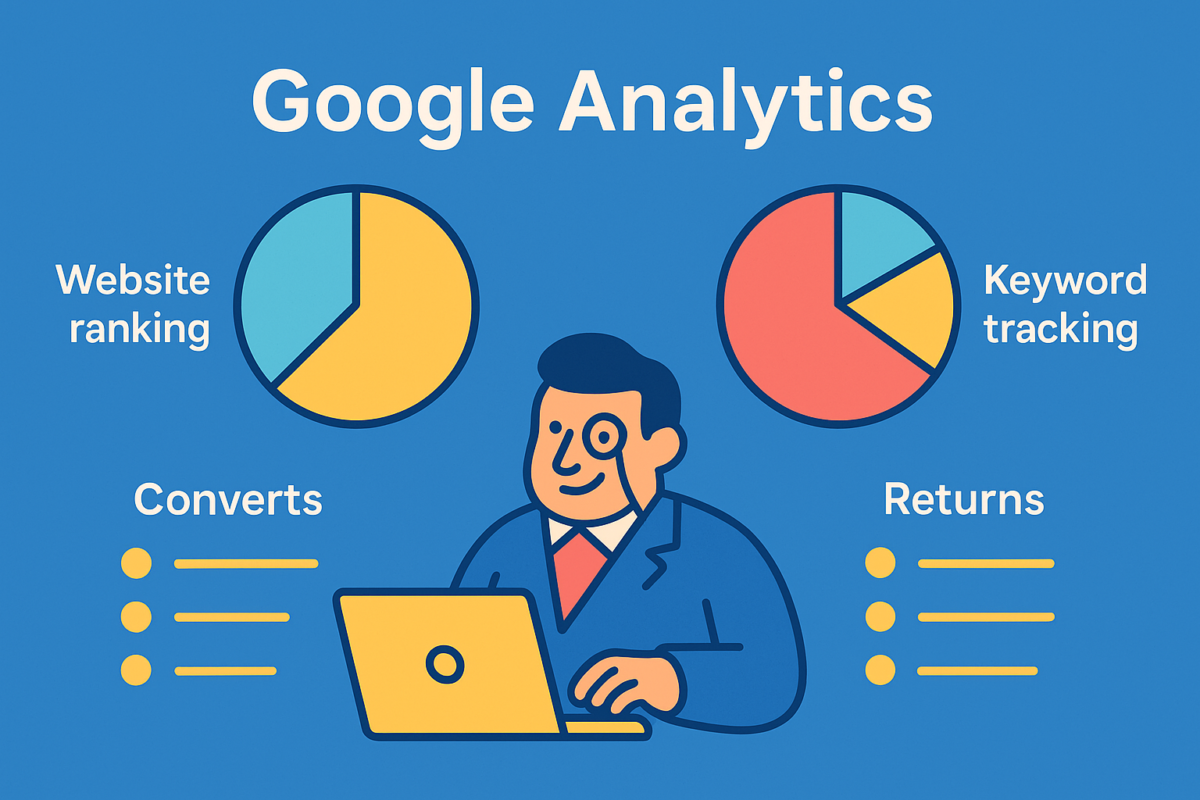SEO makes the website more visible, driving organic traffic and improving business outcomes. But how do you measure whether your SEO efforts are working? That’s where Google Analytics for SEO is introduced. A free tool that provides insights into user behavior and website traffic. When used effectively, possibilities are endless. So, Indexed Zone SEO explores for you this tool, including key metrics, Google Analytics SEO tracking strategies, and practical tips.
Why Google Analytics Matters for SEO
SEO is more than just keyword rankings. It involves improving site usability, page speed, content quality, and ultimately user satisfaction. Using Google Analytics helps assess these factors by tracking how users interact with your site after arriving via organic search. Hence, instead of focusing solely on where your site ranks, GA allows you to look deeper. You can track how long users stay, what pages they view, whether they convert, and if they return. These are the metrics that truly indicate SEO success.

A Bit More About Organic Traffic
Organic traffic refers to visitors who arrive at your site through unpaid search results. These users are often the most valuable, as they’re actively searching for what you offer.
To optimize for organic traffic, focus on your indexed pages — the parts of your site that search engines have successfully crawled and included in their databases. If a page isn’t indexed, it doesn’t exist in search results. This is where Google Analytics becomes crucial. By tracking traffic to indexed pages, you can identify which content performs well and which areas need work.
Using Google Analytics for local SEO helps ensure your most important pages are accessible, error-free, and filled with relevant content. Expanding your indexed content strategically can significantly boost visibility and traffic.
Setting Up Google Analytics for SEO Tracking
Using Google Analytics for SEO is not hard at all. But before diving into metrics, ensure your GA is properly set up to collect relevant SEO data:
- Connect Google Search Console to Google Analytics – Linking GA to Google Search Console (GSC) allows you to view organic search queries, impressions, clicks, and average search engine positioning within Analytics. This connection bridges the gap between traffic data and search visibility.
- Set Up Goals and Conversions – Define what counts as a success on your site. Form submissions, purchases, downloads, etc. Create Goals in GA to track these actions. This way, you can tie organic traffic to real business outcomes.
- Use UTM Parameters – Although GA automatically distinguishes organic traffic, you should use UTM parameters in campaign links. All for deeper segmentation and tracking, especially for cross-channel strategies.
Key Google Analytics Metrics to Measure SEO Success
Now, let us explain why using Google Analytics for SEO is extremely important. Here are the metrics and reports that matter the most:
1. Organic Traffic
This shows the number of people visiting your website from search engines. Track changes over time and evaluate spikes or drops related to SEO efforts. Blog updates or technical fixes are good examples.
2. Landing Pages
This report shows which pages users land on when coming from organic search. It’s perfect for understanding what content drives traffic and where SEO improvements are needed.
3. Bounce Rate & Time on Page
These metrics are telling us how users interact with your content:
- Bounce rate: % of people who leave after checking one page.
- Average time on page: Measures user engagement.
High bounce rates may signal irrelevant content or slow-loading pages. On the other hand, longer time on page usually reflects high content quality.
4. Goal Conversions
Here you can see which organic visitors complete key actions on your site. This also tells you if SEO traffic is generating leads or sales.
5. Geographic and Demographic Insights
Learn the origins of your organic visitors. Using Google Analytics for local SEO can make the difference. Knowing your top-performing regions can help you tailor content easily and more effectively.
6. Mobile Performance
Since mobile-friendliness affects rankings, it’s crucial to evaluate SEO traffic on mobile devices. Compare mobile vs. desktop performance and identify usability issues.

Using Google Analytics to Track SEO Rankings
While GA doesn’t directly show keyword rankings, it provides indirect signals:
- Search Console Data in GA – Check Queries to see the keywords that bring users to your site.
- Landing Pages Report – Use this alongside your known keyword strategy. If certain pages are receiving more organic traffic, they likely rank better for target keywords.
- Custom Dashboards – Create dashboards that display traffic trends, conversions, and behavior metrics for your top SEO pages.
Benefits of Using Google Analytics for SEO
Here’s why GA is essential for measuring SEO success:
1. Comprehensive Insights – Track what people do on your site and how long they stay there. This helps identify high-performing content as well as the areas where you can improve.
2. Conversion Tracking – Realize which SEO strategies lead to greater results. It can be conversions, sign-ups, or purchases.
3. User Behavior Understanding – Measure engagement through bounce rates, session durations, and page views.
4. Troubleshooting Issues – Spot sudden traffic drops and correlate them with changes to content, algorithm updates, or technical SEO problems.
5. Segmented Data – Filter by device, region, source/medium, and more to get tailored insights for better decision-making.
Best Practices for Using GA in SEO
- Regularly review your top-performing landing pages and update them to maintain or improve rankings.
- Segment your audience to understand how different users engage with your site.
- Create custom alerts for unusual spikes or drops in organic traffic.
- Benchmark performance over time. Especially after major SEO campaigns or Google algorithm updates.
- Complement GA with GSC for a more complete SEO analysis.

FAQ: Using Google Analytics for SEO
1. How to use Google Analytics to measure SEO?
Use GA to track organic traffic, user behavior, and conversions. Focus on reports like Organic Search under Acquisition, Landing Pages, and Goal Completions. This info shows drives traffic and achieves business goals.
2. How to track SEO rankings with Google Analytics?
GA itself doesn’t track keyword rankings. However, by linking Google Search Console, you can view keyword impressions, clicks, and positions. Also, monitor Landing Page performance to infer which pages are gaining or losing keyword visibility.
3. What is Google Analytics in SEO?
Google Analytics is a web analytics tool used in SEO to track how visitors interact with a website after arriving via organic search.
4. What are the benefits of Google Analytics for SEO?
- Understand which pages attract organic traffic.
- Track user engagement and bounce rates.
- Measure conversions from SEO traffic.
- Identify technical or content issues.
- Segment audiences for targeted content strategies.
- Improving relevance for the search engine.
5. Does Google Analytics improve relevance for search engines?
While GA doesn’t directly influence SEO rankings, it helps improve content and user experience, which are critical ranking factors. Analyzing behavior data surely helps with further optimization.
Conclusion
Google Analytics for SEO is a powerful ally in your journey. It measures how many visitors you get, how they behave, and what content they value. Also, whether your site meets their needs. By using GA to measure your SEO success, you can make smarter decisions, refine your strategy, and drive real, measurable growth. Remember, SEO is not a one-time task but an ongoing process. And with the right tools like Google Analytics, you can stay ahead of the curve and maximize your organic potential.



